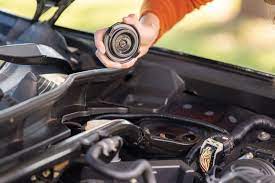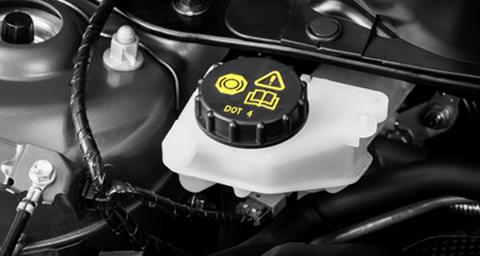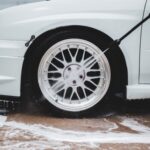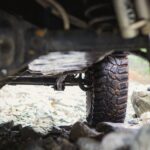One of your car’s most important parts is the brakes. Brake fluid inspection is one of the most crucial maintenance procedures. Your car or truck won’t stop when you press the brake pedal if there is no brake fluid. It is much simpler and more crucial to check brake fluid than you might realize. Please take the time to carefully read this article if you want to learn how to check the brake fluid.
What Is Brake Fluid?
The hydraulic fluid known as brake fluid aids in the brake pedal’s movement. Lubricating the brake system is a further crucial function. It also aids in stopping corrosion. The brake fluid used in the majority of vehicles is based on glycol-ether.
The brake fluid in some other car types may be silicone-based (DOT-5) or mineral oil-based (LHM). Be sure to consult your owner’s manual to determine what is required for the make and model of your vehicle before adding brake fluid.
Importance Of Checking Your Brake Fluid
Your brake system’s effectiveness can be significantly reduced if you have low brake fluid. Check your brake fluid if you notice a spongy sensation when applying the brakes or if they aren’t functioning properly.
Check your fluid today to see if you need more brake fluid because low or contaminated fluid can cause your brakes to fail while you’re driving.
It is a good idea to inspect your entire brake system because a number of connected brake components may be the root of your brake fluid level dropping.
Check your brake pads, rotors, calipers, and brake lines for any signs of damage, extreme wear, or brake fluid leakage if refilling your brake fluid doesn’t resolve your braking problem.
How Do I Check The Brake Fluid?

Find The Brake Fluid
To check your brake fluid, locate the brake master cylinder reservoir first. Usually mounted at the back of the engine compartment, close to the firewall, this reservoir is a plastic canister. The brake pedal and the brake booster on the driver’s side are typically close by.
Consult your owner’s manual if you’re having trouble locating the reservoir for your brake master cylinder. Most reservoirs in automobiles manufactured after 1980 are made of translucent plastic, and they have a line that can be seen on the exterior to show the level of the fluid inside.
Older cars have a metal reservoir with a clamp holding the lid down. When you’re ready to open it, thoroughly clean the lid before prying open the clamp with a screwdriver and opening the lid. On the reservoir’s inside, there ought to be a fluid line.
Make sure everything is ready before opening your brake master cylinder reservoir to check the brake fluid. Brake fluid can be harmed by exposure to humid air. This may occur if you leave your brake fluid container open for an extended period of time.
The safety of exposed brake fluid can be jeopardized in as little as 15 minutes, depending on your local climate and air quality. As much as possible, keep the master cylinder reservoir and brake fluid container sealed.
Inspect The Fluid Level And Color
Make sure your brake fluid is filled to the recommended fill line. If not, you might need to top off your brake fluid. But worn-out brake pads can also be to blame for low brake fluid.
This is due to the fact that thin brake pads will require the caliper piston to enact a slight inward movement, which will cause the reservoir’s fluid level to decrease.
Check your brake pads or have a qualified mechanic replace them if you notice a low brake fluid level. You can check your fluid level once more and decide whether or not you need to top off your brake fluid after replacing your brake pads.
Examine the color of your brake fluid even if the level is correct. Uncleanliness and other contaminants may be present in the dark fluid. The system becomes less effective as dirt is introduced or as brake fluid ages and degrades.
This could start to harm your hydraulic parts, resulting in exponential damage and lowering the effectiveness of your brake system.
Checking For Leaks
You probably have a brake fluid leak if your reservoir was empty or nearly empty. Determine where the fluid is leaking from by thoroughly inspecting the brake system, then fix the problem immediately.
By pressing the brake pedal while someone is watching the brake system, the problem area can be quickly located by a drip or spray coming from it.
Signs Of Low Brake Fluid
The hydraulic component of the braking system is closed, which means that under normal conditions, the fluid is not used up and won’t evaporate. However, this does not preclude the possibility of fluid level variations.
Since more fluid is needed in the lines to extend the calipers and wheel cylinders to stop your car, brake pad or shoe wear is one of the main causes of low brake fluid. Low fluid levels, however, more frequently point to a leak.
No matter the cause of the low, the following symptoms are frequently present:
- When the brake is applied, the pedal approaches the floor more deeply than usual.
- a pedal feels that is spongy or erratic.
- greater braking distances.
- The brake alert light is on.
- pulling to one side when coming to a stop.
A few of these symptoms can be instantly resolved by simply knowing how to check the brake fluid and top it off.
How Do I Change My Own Brake Fluid?
Are you thinking about performing a brake fluid change at home? While checking your brake fluid level can be simple, changing your brake fluid isn’t. Think about letting the experts handle a brake fluid refill, change, or flush since doing so:
- can involve twelve or more tools, some of which are specific to the procedure.
- exposes you to a substance that might be very toxic.
- brake fluid poses a threat to the paint job of your car because it can eat away at it.



